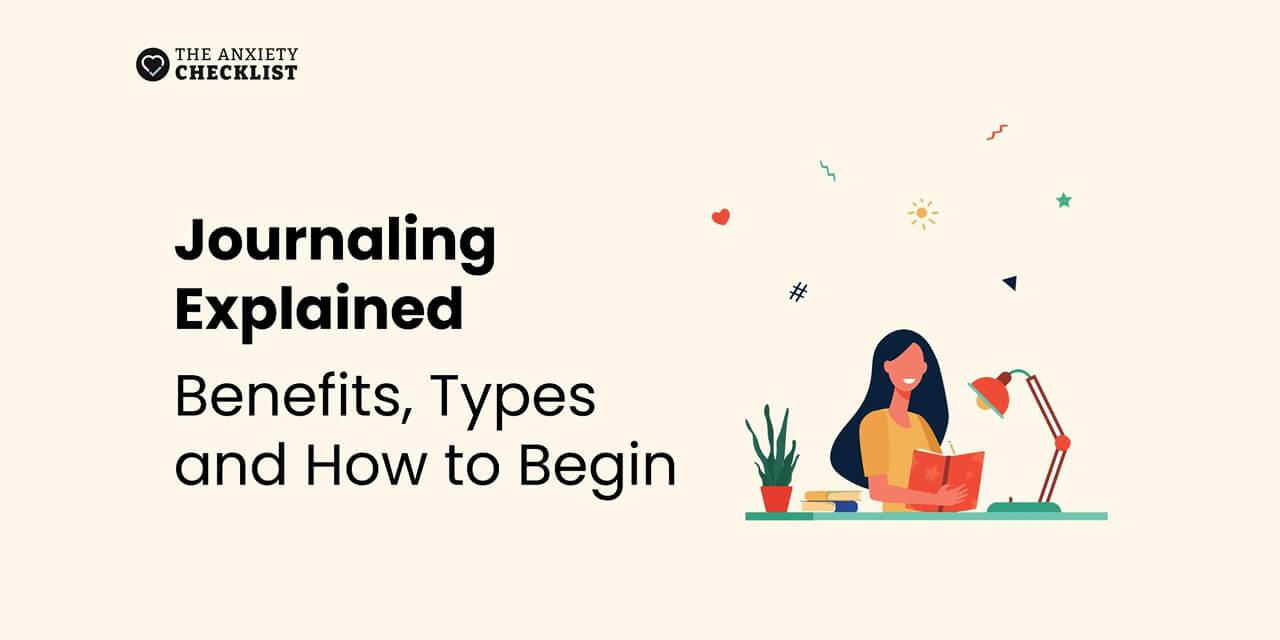What Are Power Poses?
Is anxiety holding you back from the life you deserve?
Potential Benefits of Power Poses
Even though it may sound like a small change, these small posture changes can do more than just make you look confident—they can actually help you feel it too. Let’s take a closer look at the potential benefits.
Creates a Sense of Control
High power poses can make you feel more grounded during moments that may normally make you uneasy. When you take up more space with your body, it sends a quiet message to your brain that you're in charge.
People with anxiety often feel like life is happening to them instead of with them. Power poses flip that. They make you feel like you're steering your ship again.
That feeling of control can carry into your thoughts and decisions. For example, you might find you're more willing to speak up, set boundaries, or take action.
Boosts Confidence During Stressful Moments
Anyone who’s dealt with anxiety challenges knows that stressful situations can make you isolate yourself.
High power poses are an effective countermeasure to this. They give you the strength to face what stresses you out.
They tell your brain that you’re not backing down, giving you a strong mental footing to work with.
For example, holding a high power pose before a big event can help calm your nerves and quiet self-doubt. You feel more ready to face what’s ahead instead of bracing for the worst.
Improves Posture and Self-Perception
It’s true that anxiety affects your posture—drooping shoulders, avoiding eye contact and finding quiet places can be some signs that you witness when you’re overwhelmed. Over time, poor posture can even affect how you think and feel about yourself.
The best part is that the power poses aren’t just for appearances; it can also shift how you feel inside. When you carry yourself with confidence, you start to feel it inside, and your brain begins to align with the message your body is sending.
Reinforces the Mind-Body Connection
A common side effect of anxiety and panic attacks is the disconnection between your mind and body. Your heart races while your thoughts spiral. This creates a feeling of being out of sync, which further intensifies the feeling of distress.
High power poses help bring your mind and body into alignment. They remind your brain that your body is stable and grounded, even if your mind feels scattered.
A high power pose sends a quiet but powerful message to your brain: “I’m okay. I’m strong. I can handle this.” That kind of steady body language can reduce overthinking that fuels anxiety.
Practicing this regularly can help your body and mind feel more like a team. You’re no longer just reacting to stress; you’re responding with a clear, calm presence.
Anchors You in the Present Moment
Anxiety has a way of dragging your attention into the future. You start imagining worst-case scenarios and stressing about outcomes you can’t control.
That’s where power poses can quietly shift things. They pull you out of your head and back into your body.
When you hold a high power pose, you’re asked to focus on something real. Your mind focuses on your surroundings and the space you’re taking up. That act alone allows you to pause and reset.
This kind of physical grounding can help slow down your racing thoughts. Instead of being caught up in “what ifs,” you start noticing what is.
High power poses give your mind a place to land, especially when anxiety makes you feel like you’re drifting. Even just two minutes in a solid stance can shift your attention from crippling fear to presence in the moment.
This motivational TED Talk offers a great perspective on how body language shapes who you are and shows how a simple shift in posture can make a difference.
It's a helpful watch for anyone feeling overwhelmed or anxious:
Easy Power Poses to Try Today
Here are some simple, beginner-friendly poses you can try right now—no special equipment or awkward moves required. Just you, your body, and a few minutes to feel more confident.
The Victory Pose
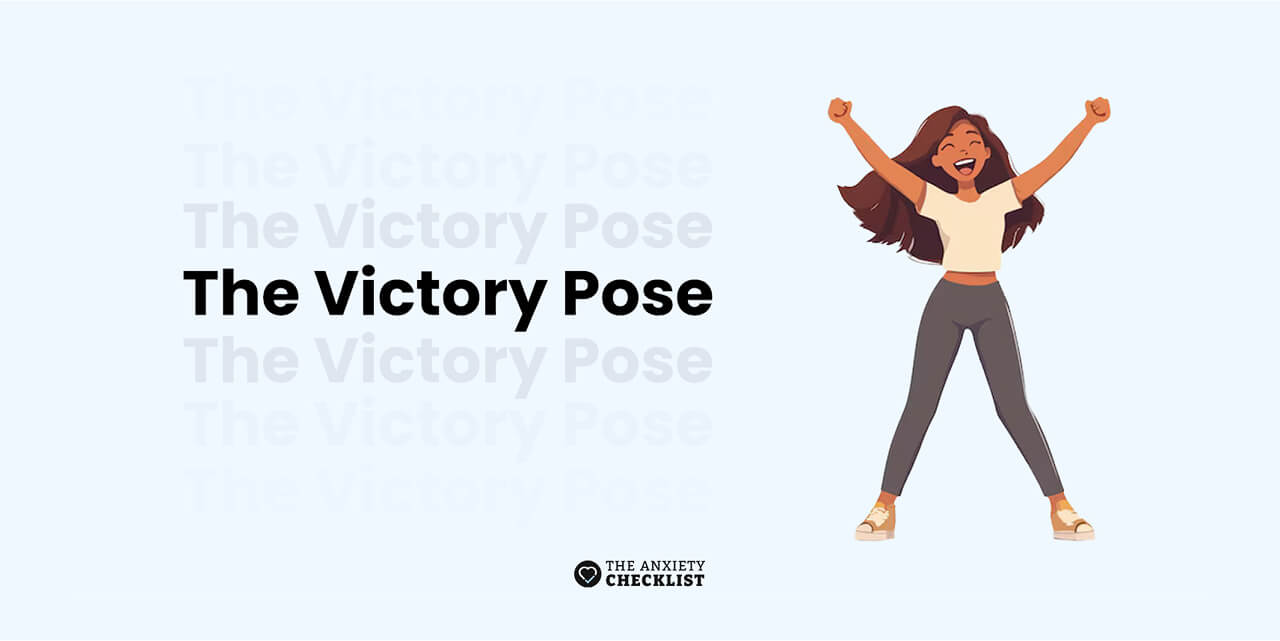
The Victory Pose positions your body in a way that helps your mind feel stronger. It’s one of the most common power poses. You stand tall, stretch your arms high over your head, and open your chest.
Picture someone who just won a race: arms up, chin slightly lifted, feet planted. That’s the Victory Pose. It sends a message to your brain that you're proud, strong, and ready.
The Victory power pose can help in moments when anxiety takes over. If you're about to speak in a meeting, walk into an interview, or deal with something uncomfortable, holding this pose for just one minute can make a huge difference.
You can use high power poses like the Victory Pose for the following situations:
The Superhero Pose

The Superhero Pose is a simple body stance that emulates strength and readiness.
You stand with your feet about shoulder-width apart, hands resting on your hips, and your chest slightly lifted. Your chin stays level, and your eyes look forward.
High power poses like this can be useful before moments that usually make you feel small or unsure. If you're nervous about asking a question, standing up for yourself, or making a choice, this pose can help.
It doesn’t take long to do, and it can shift your mindset just enough to make a difference. You can use the Superhero Pose in the following situations:
The Confident Sit
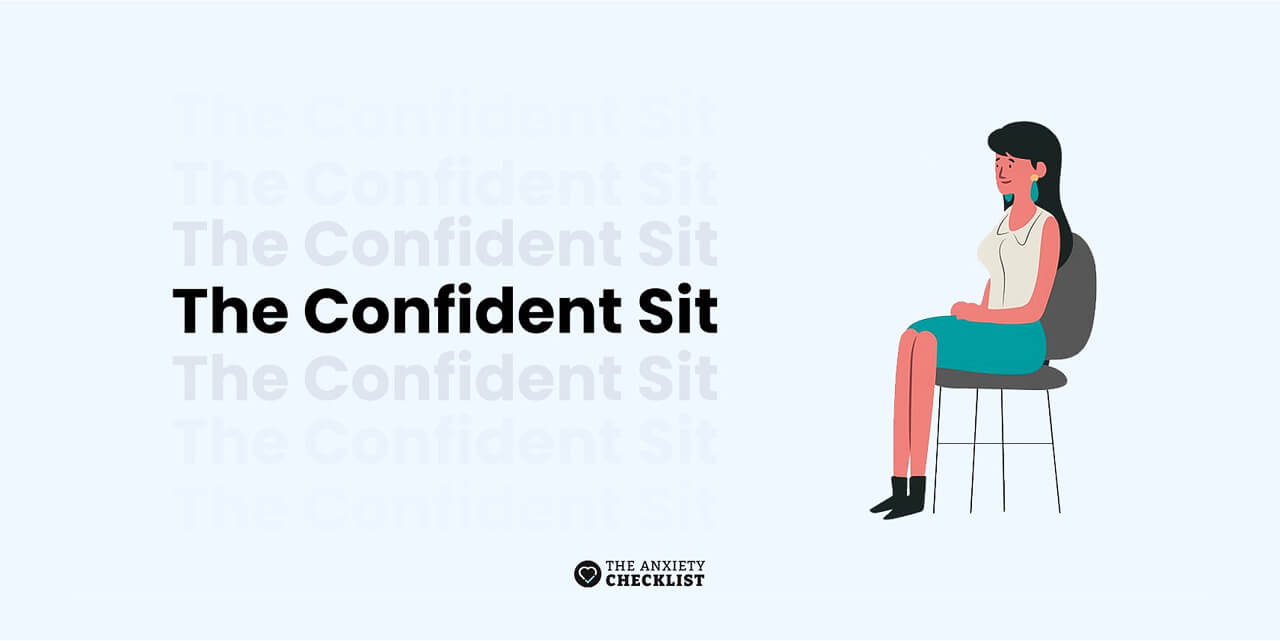
The Confident Sit is one of the power poses that can help during stressful moments.
You sit upright with your back straight, feet flat on the floor, and shoulders relaxed. Your hands rest calmly on your thighs or the armrests. Your chin stays level, and your eyes face forward. Power poses like this are unimposing but impactful.
High power poses like this work well in situations where you can’t stand up but still need to let your presence be known. It works for meetings, waiting for a job interview, or on a video call. It keeps you grounded while sending a signal to your brain that you’re safe and capable.
Try using the Confident Sit in the following situations:
The Grounded Stand
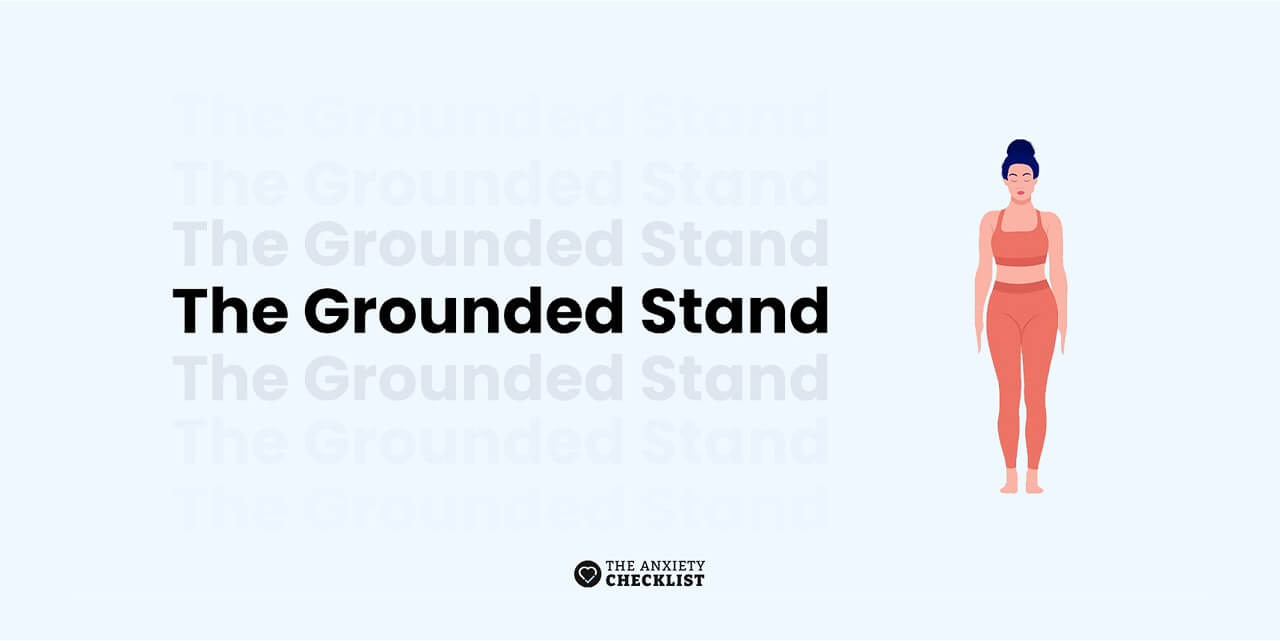
Next up is the Grounded Stand. It’s a power pose where you plant your feet firmly about hip-width apart, stand tall, let your arms rest by your sides, and keep your shoulders relaxed. Your head stays upright and your gaze steady. It’s simple yet strong.
High power poses like this work well when you want to feel secure but not stiff or tense. If you’re waiting to speak, standing in a crowd, or walking into a room that makes you anxious, this pose can help you feel settled.
It helps you feel more in control without forcing confidence. Instead of shrinking or fidgeting, you stay grounded in your own space.
Try high power poses like this in the following situations:
The Wall Stretch
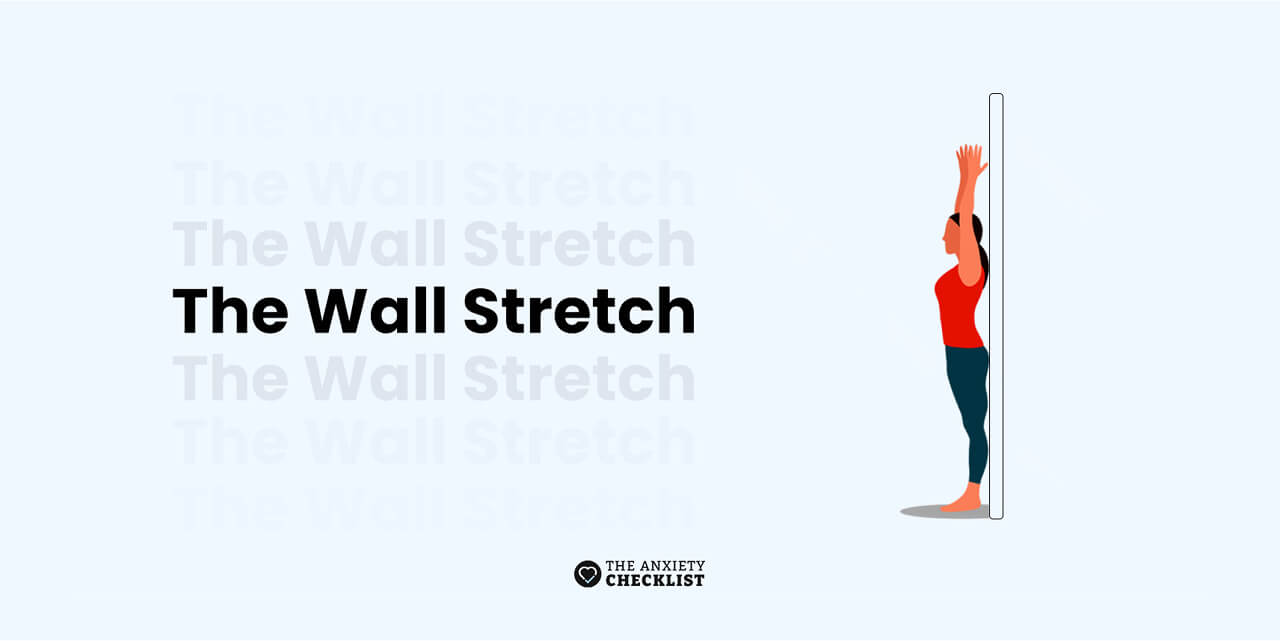
The Wall Stretch is one of those high power poses that opens up both your body and breath.
Stand facing a wall, place your palms high against it, and stretch your arms upward and slightly outward. Keep your feet grounded and let your chest lift as your spine gently lengthens.
This pose helps your body take up more space, which sends a calm and steady signal to your brain. When anxiety makes you feel small or stuck, high power poses like this can provide some relief.
It can also help loosen tight muscles induced by fear or tension. You can try the wall stretch pose in the following situations:
The CEO Pose
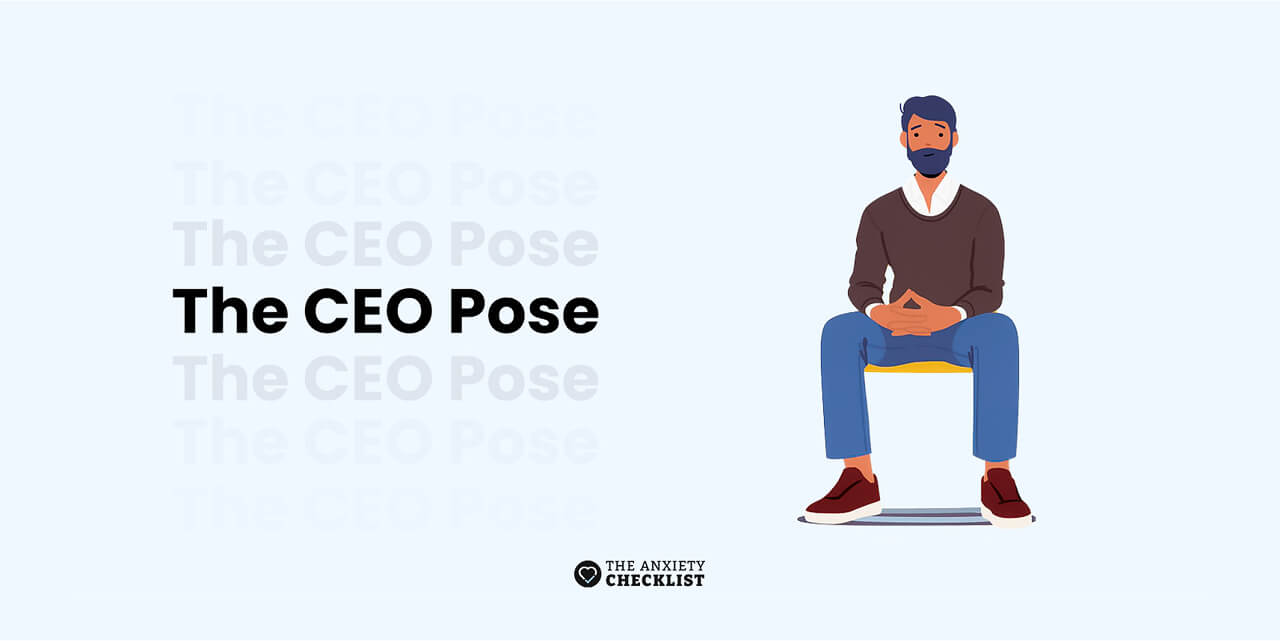
High power poses like this can help you feel calm and in control.
You sit back in a chair, lean slightly, and rest your arms wide on the armrests. Your legs are steady, either flat on the floor or crossed loosely at the ankle. Your chest stays open, and your gaze is relaxed but steady.
The CEO Pose works very well before moments that stir up self-doubt. You can use it when you’re about to take an important phone call or speak up in a group. Striking the CEO Pose can ground your body and help you feel stronger.
These high power poses can work in the following situations:
The Mirror Stance
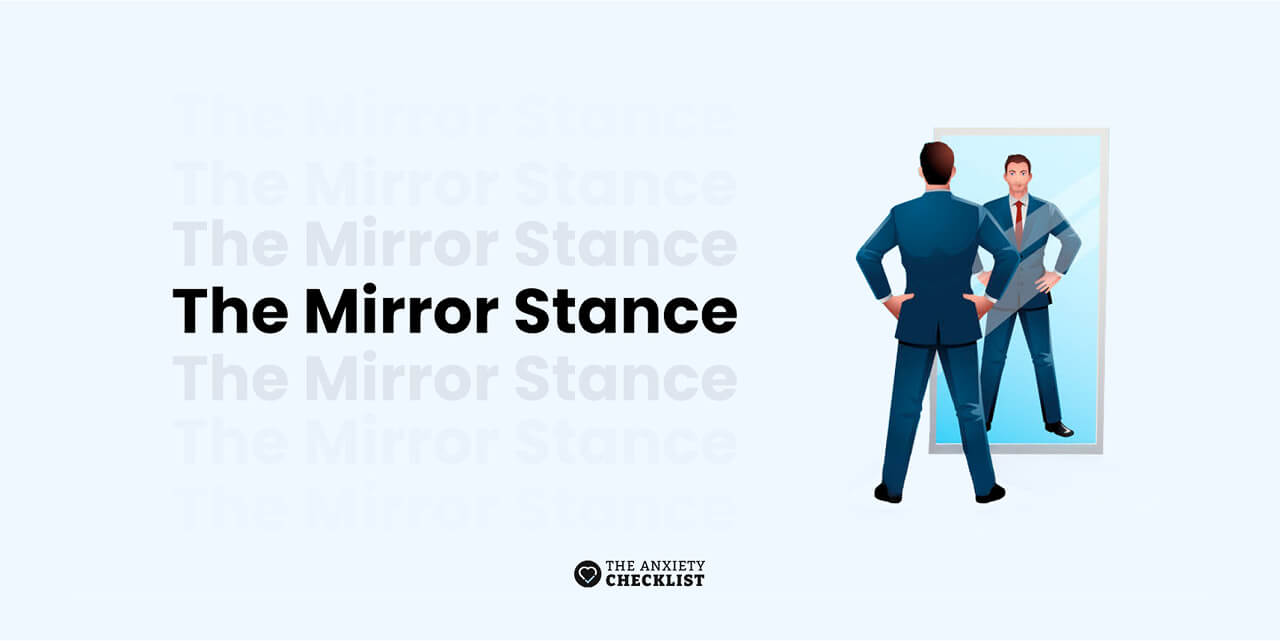
Like several other power poses, the Mirror Stance helps you regain the confidence you may have lost.
To do it, stand tall in front of a mirror with your feet shoulder-width apart. Pull your shoulders back, keep your chin up, and look straight ahead. Let your arms rest naturally at your sides or place your hands on your hips.
It’s called the Mirror Stance because it’s similar to how you'd want to see yourself standing in a mirror. Calm, firm, and sure of yourself.
The Mirror Stance is one of the easiest high power poses to try before moments that normally bring anxiety. Standing this way for just a couple of minutes can help slow down nervous thoughts. It tells your brain that you’re safe and capable.
Use this power pose before:
The Arm Cross Pose

Last on our list of power poses is the Arm Cross Pose. In this pose, your feet are firmly planted about shoulder-width apart, your shoulders are at the back, and your head is held high and your arms are crossed in front of your chest. The key is to avoid slouching or shrinking your posture.
Such power poses can be a quiet way to feel more in control before moments that usually feel too big or overwhelming. You might use it before a job interview, a tough conversation, or even a first date.
These situations can make anyone with anxiety feel small, but high power poses like the Arm Cross Pose remind your body that you’re in charge.
You can use it in the following situations:
Conclusion
Previous Article

17 Proven Grounding Techniques to Ease Anxiety and Stress

Advertisement
BetterHelp
BetterHelp makes starting therapy easy. Get a tailored therapist match based on your needs and preferences - in as little as 24 hours!
Enjoy 20% off your first month with code "anxietycheck"

4 million+ Helped
Access Therapy 24/7
Preferred by 94% of users
If you are in a crisis or any other person may be in danger - don't use this site. These resources can provide you with immediate help.



